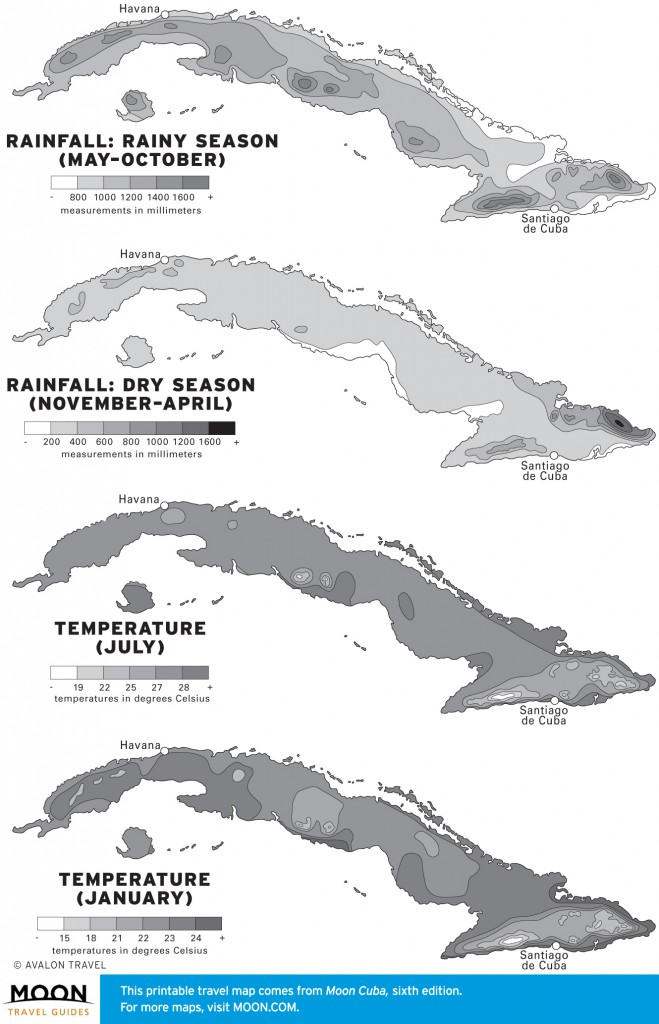
Havana after the rain. Photo © Rinaldo Wurglitsch, licensed Creative Commons Attribution.
Seasonal weather in Cuba is influenced by the warm Gulf Stream currents and by the North Atlantic high-pressure zone that lies northeast of Cuba and gives rise to the near-constant brisa, the local name for the trade winds that caress Cuba year-round. Despite its more southerly latitude, Havana, wrote Ernest Hemingway, “is cooler than most northern cities in [July and August], because the northern trades get up about ten o’clock in the morning and blow until about five o’clock the next morning.” Summer months, however, can be insufferably hot and humid.
Cuba’s mean annual temperature is 25.2°C, with an average of eight hours of sunshine per day throughout the year. There is little seasonal variation, with an average temperature in January of 22°C, rising (along with humidity) to an average of 27.2°C in July. Nonetheless, in summer the temperature can rise to 32°C or more, and far higher in the Oriente, especially the lowlands of Guantánamo Province (the hottest part of the country). The southern coast is generally hotter than the north coast, which receives the trades. Winds sometimes rip across the central plains in summer.
Midwinter temperatures can fall below 10°C when severe cold fronts sweep down from Canada. Atop the higher mountains temperatures may plunge at night to 5°C.
Rain falls on Cuba an average of 85-100 days a year, totaling an annual average of 132 centimeters. Almost two-thirds falls during the May-October wet season, which can be astoundingly humid. Summer rain is most often a series of intermittent showers, but afternoon downpours and torrential storms are common. Years of relative drought are common.
Central and western regions experience a three- to five-month dry period known as La Seca. February through April and December are the driest months. Nonetheless, heavy winter downpours are associated with cold fronts sweeping south from North America.
The Atlantic coast tends to be slightly rainier than the southern coast. The mountains receive the highest rainfall, especially the uplands of eastern Oriente (up to 400 centimeters fall in the Cuchillas de Toa). The mountains produce regional microclimates, forming rain shadows along the southeast coast, so that pockets of cacti and parched scrub grow in the lee of thick-forested slopes.

Rainfall in Cuba
Cuba lies within the hurricane belt. August through October is hurricane season, but freak tropical storms can hit Cuba in other months, too. Most hurricanes that strike Cuba originate in the western Caribbean during October and move north over the island. Cuba has been struck by several hurricanes in recent years. In fact, 2008 was one of the worst years in history, with three direct hits in two months. In October 2012, Hurricane Sandy struck Santiago de Cuba, killing 11 people—the worst hurricane in decades.
The country has a highly developed disaster preparedness and exemplary civil defense network for evacuations.
Excerpted from the Sixth Edition of Moon Cuba.